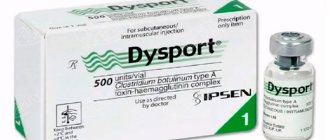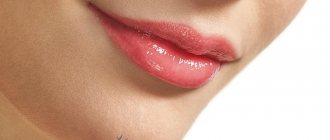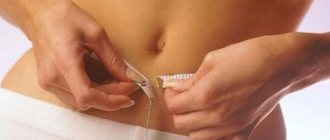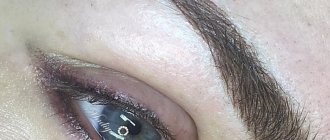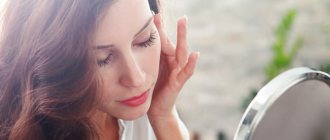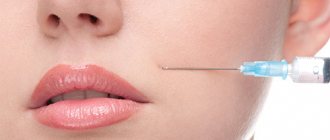Botox - the principle of action on the body
Botulinum neurotoxin is the most poisonous substance known. It is a complex amino acid produced by the bacterium Clostridium botulinum and is the causative agent of human botulism (a neuroparalytic disease). There are eight types of toxin, labeled A through G. Inhalation of 1 mcg of this toxin by a person is fatal. It acts on the nervous system, paralyzing the muscles. However, the muscle paralyzing function of the toxin, when used for good, has proven useful in more than 50 pathological conditions, including use in cosmetology.
In high concentrations, botulinum toxin causes the development of botulism, a serious, life-threatening disease. Botulism, if left untreated, can lead to respiratory failure and death.
Botox is the trade name for a drug containing botulinum toxin type A, which is used medically to treat certain muscle conditions, as well as cosmetically to eliminate wrinkles by temporarily paralyzing the facial muscles. The drug is approved for the treatment of a variety of medical conditions, including chronic migraine, excessive sweating, blepharospasm, dystonia-related strabismus, and cervical dystonia. The product, known as BOTOX® Cosmetic, was approved in 2002 for the treatment of glabellar lines and in 2013 for the treatment of wrinkles at the corners of the eyes.
Although Botox is a powerful poison, when used correctly it has a number of uses in medicine and cosmetology.
The botulinum toxin drug is administered to patients in very small concentrations. Its action is to block nerve impulses transmitted to the muscles. In order for muscles to contract, nerve endings release a special substance called acetylcholine (a neurotransmitter). Acetylcholine acts on muscle fiber receptors, causing them to contract, or shorten. Botox injections temporarily stop the release of the neurotransmitter, which prevents the muscles from contracting. As a result, the muscles become less rigid and deep wrinkles are smoothed out. The clinical effect of botulinum toxin injections lasts from 2 to 6 months and then wears off. The treated muscles gradually regain their function and usually return to their previous appearance. Injections can be repeated to maintain the smoothed skin effect.
What is Botox and how do injections work?
The amazing properties of botulinum toxin (Botox) and its implementation on the skin were discovered quite by accident in 1982, sometimes clinical studies were carried out in the treatment of strabismus and blepharospasm. When treating these conditions, there was an effect in the form of smoothing transverse wrinkles in the forehead area.
The drug itself is a weakened botulinum toxin, which follows from the life of the bacterium Clostridium botulinum. This bacterium is the causative agent of a dangerous disease called botulism. When toxins enter tissues, they can block muscle function, causing them to relax.
For several years, this property of Botox has been used in the treatment of diseases of the nervous system, although currently Botox injections are widely used for aesthetic and cosmetic purposes. Control injection of small doses of botulinum toxin under the skin can cause local tetanus of facial wrinkles, which lasts for several months, after which Botox is eliminated from the body.
Indications for the use of Botox injections
For cosmetic purposes, botulinum toxin is considered a safe and effective treatment for reducing facial wrinkles, especially in the upper third of the face. Injecting botulinum toxin into the muscles beneath the expression lines causes those muscles to relax, resulting in a smoother appearance of the skin above them. Wrinkle smoothing usually begins to be noticeable three days after treatment, and the maximum effect is achieved two weeks after the procedure.
Indications for the correction of cosmetic defects using injections are wrinkles in the area:
- neck;
- chin;
- mouth;
- nasolabial folds;
- dorsum of the nose (“bunny wrinkles”);
Rabbit lines are folds of skin that gather on the bridge of the nose.
- corners of the eyes (“crow’s feet”);
- interbrow (vertical facial space between the eyebrows);
- forehead (horizontal wrinkles).
Horizontal wrinkles on the forehead are successfully eliminated with Botox injections
Botulinum toxin is not a medicine. When its effects wear off after 2-6 months, the face gradually returns to its pre-procedure state.
With the help of Botox, you can perform non-surgical tightening of facial tissues (Botox lifting), correction of facial asymmetry, elimination of weak and moderate overhang of the upper eyelid (ptosis), correction of hypertrophy of the masticatory muscles. The injections treat excessive sweating in various areas of the body, including the feet, palms and armpits. Botox is also used in the preparatory period before facial plastic surgery, as well as for restorative purposes after plastic surgery.
The essence of the technique
In cosmetology, Botox injections are used to eliminate facial wrinkles. These wrinkles form on the face as a result of the constant contraction of individual facial muscles.
Microinjections of the drug are administered into these muscles, as a result, the transmission of nerve impulses to them stops, and the muscle fibers relax. Persistent muscle relaxation leads to the disappearance of facial wrinkles.
So, the indications for use in cosmetology are:
- wrinkles on the forehead and in the area between the eyebrows;
- drooping eyebrows;
- wrinkles around the eyes (so-called “crow’s feet”);
- the presence of pronounced folds in the area of the nasolabial triangle.
The toxin is also injected into the jaw area, chin and neck.
Benefits of the procedure:
- simplicity;
- low price;
- low risk of complications.
Botox injections can only be given by a specialist who has been trained to work with botulinum toxin preparations and has a permit issued by the manufacturer. Each such doctor is issued a personalized certificate with a number.
Technique of drug administration
Botox injections are performed exclusively by qualified medical professionals in clinics or cosmetology centers. Before the procedure, the doctor conducts a conversation with the client, during which he clarifies whether the latter has certain diseases or physiological characteristics that must be taken into account before prescribing the procedure. The doctor assesses the mobility of the patient’s facial muscles, asking him to “make a little face” in order to engage the desired area. Then the patient signs a paper recording his consent to the use of Botox. The dose, number of injections, injection site, and frequency of treatments will depend on the client's individual needs and response to the drug.
Preparatory stage
No special preparation is required before the procedure. In many clinics, the patient will be asked to take a photo of their face before injection treatment in order to visually evaluate the result a few days later.
On the day of the procedure, it is not recommended to attend procedures or activities that may affect the condition of facial blood vessels, such as sauna, massage, or sports training. Cosmetic care procedures can be combined with botulinum therapy, but they should be carried out before Botox is administered.
The required dose of Botox depends on the area being treated, as well as the individual needs of the client.
Botox must be diluted and prepared in a sterile environment using sterile equipment. Such conditions can be provided by a specialist with a medical education in a legal specialized institution.
Carrying out the procedure
The administration of the drug lasts about 10–15 minutes. Injections are practically painless due to the use of very thin needles and small doses of the drug:
- The patient sits comfortably in a cosmetology chair.
- Immediately before the procedure, the area for future injections is marked.
- The specialist cleans the face of makeup (if necessary) and treats the skin with a disinfectant.
- The patient is asked to tense the muscles of the treated area: frown, wrinkle his forehead, smile broadly. Injections are performed with disposable insulin syringes with a non-removable needle.
- Botulinum toxin is administered by dissolving the powder in saline and injecting it directly into the neuromuscular tissue. Delicate areas around the eyes and lips are treated with intradermal injections, and the cosmetic effect is not affected at all.
- After the procedure is completed, the skin is re-treated with an antiseptic.
Injecting Botox into the eyebrow area: video
Technique of the procedure
Only a certified cosmetologist who has undergone specialized training in botulinum therapy and has sufficient injection experience can perform Botox injections into the forehead, as well as into any other anatomical area.
The procedure is not as simple as it is often described in popular magazines. The smallest details play a significant role. It is important to correctly select the total dosage of botulinum toxin (number of units) and correctly distribute it between injection points. What matters is the depth of insertion and the direction of the needle. The needle should go perpendicular to the muscle fibers. If it is located at the wrong angle, the cosmetologist may simply “miss” the target muscle, and you will not get the desired effect.
Before Botox injections into the forehead, the cosmetologist will ask you to “work” the muscles of the frontal area to mark the injection points for botulinum toxin. As a rule, these points correspond to the places of greatest visual manifestation of the activity of facial muscles. Using a marker (special pencil), markings are applied to the face along which the drug will be administered. During the procedure, the doctor may repeatedly ask you to tense your muscles in order to select the injection point as accurately as possible.
The injections themselves can be quite painful, depending on the level of the pain threshold. Women with a low pain threshold can undergo topical anesthesia: before injections, 15-20 minutes before, a cream with an anesthetic is applied to the skin. Then the cream is removed, the skin is additionally cleansed with an antiseptic.
Possibility of performing injections at home
Some people choose to self-inject Botox because they can't get their doctor to agree to what they want. For reasons that may be general or specific, a doctor has every right to refuse a patient Botox injections in certain places or in certain quantities, which prompts some clients to try to take matters into their own hands. But this is not a tool with which you can joke. There are three things about Botox injections that require special knowledge and skill:
- Firstly, you need to have a perfect knowledge of facial anatomy. Botox is a muscle relaxant that must be injected directly into the muscle. Injecting the drug into the wrong place is fraught with the development of complications and cosmetic defects.
- Secondly, it is necessary to very precisely control the injection quantity. Too little of the drug will not have any effect. Too large and will cause even more problems, such as drooping eyelids, difficulty opening eyes, etc.
- Third, you need to have a very good idea of how the Botox will dissipate in the injection areas over the next 3 days. Muscles that are adjacent to the treated area may be affected, causing an undesirable effect.
Botox is a prescription drug only.
To summarize the above, we can conclude: Botox treatment can only be performed by a qualified specialist.
Complications after Botox injection into the forehead
Of course, there are complications after Botox injections. The low qualifications of the doctor performing this procedure is most often the cause of complications. A specialist must dose Botox correctly. The amount of the drug depends on the patient’s age and gender. If an inexperienced doctor overdoses the drug and injects it into the wrong muscle, drooping of the eyebrows may occur and facial asymmetry may appear.
Drooping of any part of the face is called ptosis. This is not fatal, everything will be restored in 5-6 months. But you have to live with this all the time. Physiotherapy accelerates the process of muscle recovery, and also uses vitamins and medications. One of the complications is when there is no result. It happens that the patient does not comply with the doctor’s requirements before the injection and this does not produce results. To avoid complications, you must follow some rules:
- do not injure the injection site and do not expose your face to active facial expressions;
- do not bend over or lie down immediately after the procedure;
- do not visit the sauna and swimming pool for the first month;
- do not stay in the sun, use sunscreen;
- follow a diet, do not drink alcohol.
Side effects include bruising and allergies. Temporary pain at the injection sites. When facial wrinkles begin to form, you should immediately rush to see a doctor and strictly follow his recommendations.
Botox injections are a reliable method that eliminates expression lines on the face, forehead, wrinkles on the neck, and also helps against excessive sweating.
For the sake of beauty, women are capable of much, but we need to sensibly evaluate the pros and cons and understand whether it is necessary to risk our health.
Rehabilitation after Botox injections
Rehabilitation is not required with this method of cosmetic correction. Immediately after a Botox injection, many experts advise their patients to avoid anything that dilates blood vessels or acts as a blood thinner for 24 hours after the drug is administered. This means avoiding activities such as intense workouts and going to the sauna. Taking Aspirin and vitamin E is prohibited. Kneading or massaging the injection area is contraindicated in the first 24 hours after the procedure. The very next day you can return to normal life, without any restrictions, including the application of decorative cosmetics and concealers. Airplane flights do not have a negative impact on the results of the procedure.
A noticeable result in smoothing out wrinkles occurs 5–7 days after the procedure.
How to care for your skin after injections, recommendations
Many people are interested in the question: is it possible to massage or cleanse the face after Botox and what recommendations should be followed? The specialist who performs the procedure should definitely tell you about facial care after Botox.
You need to ask where Botox for the face will be injected and whether the drug can be used in your case, why botulinum toxin is harmful and what not to do after the procedure.
You can begin your daily activities almost immediately after the injection, but there is an extensive list of what not to do after the drug is administered.
For four hours, it is forbidden to touch, let alone massage, your face, or take a horizontal position; for two weeks you should not sleep with your face in a pillow. All this can lead to either a decrease in the effect or its absence altogether.
After the injection, you must abstain for two weeks:
- from using masks and scrubs in the injection area;
- from drinking alcohol;
- taking antibiotics and analgesics;
- exposure to the sun and visiting a solarium;
- playing sports;
- hot baths, visits to baths and saunas;
- undergoing ultrasonic facial cleansing.
Exfoliation is a gentle and thorough cleansing of the skin. Peeling helps stimulate metabolic processes and normalizes the fat balance of the dermis. Zones and number of mesothread insertions, what it is and how it works, read here.
Features of thread face lifting after 50 years and reviews of the procedure can be found in a separate article.
Contraindications and compatibility with alcohol
Absolute contraindications to Botox treatment include:
- pregnancy and breastfeeding;
- acute general infectious processes;
- blood clotting disorders;
- a history of allergies to the drug or any of its components;
- myasthenia gravis (autoimmune neuromuscular disease);
- inflammatory processes in the area that needs correction.
Relative contraindications to the use of the method are:
- swelling of facial tissues;
- severe ptosis of facial tissues;
- exacerbation of chronic diseases;
- tendency to allergic reactions;
- chronic alcohol abuse;
- mental disorders of a temporary or permanent nature;
- taking certain medications (in particular, aminoglycoside antibiotics, anticoagulants, muscle relaxants).
The discrepancy between the patient's expectations and the potential results of the procedure is also considered a relative contraindication, in which the use of the method is unfavorable.
Alcohol compatibility
When undergoing cosmetic treatment, even one as minimally invasive as Botox injections, it is always important to ask your doctor any questions you have, especially if they relate to the safety or effectiveness of the procedure. Although there is currently no evidence that drinking alcohol affects the success of Botox treatment, alcohol can cause unwanted side effects. These include fluid retention and swelling, stimulation of relaxation and dilation of blood vessels. This vasodilation increases blood flow throughout the body, including near the surface of the skin. In addition, alcohol dehydrates and dries it out. For this reason, many medical practitioners and estheticians recommend avoiding drinking alcohol immediately before and after Botox treatment (for 24-48 hours), as bruising may occur at the injection sites.
Indications and contraindications for the use of Botox
Information for the introduction: age-related changes, signs of aging (sagging) of the skin, as well as the presence of facial wrinkles. There are also contraindications for Botox injections, listed below:
- Pregnancy (lactation) period.
- Muscle weakness in the injection area.
- Fact. Ant. absence of chronic diseases.
- Acute and chronic infections.
- Skin diseases at injection sites.
- Individual inability and increased sensitivity to Botox.
Advantages and disadvantages of the rejuvenation method
The advantages of the non-surgical method of treating wrinkles with Botox, in addition to the anti-aging effect of smoothing the face, include:
- speed of the procedure - administration of the drug takes very little time, and the procedure can be scheduled even during a lunch break;
- no need for rehabilitation - after administration of the drug, you can continue to live a normal life, without any special restrictions;
- absence of visible marks from injections - in most cases there are no visually noticeable marks after the procedure (small dots and slight redness do not count);
- affordability - one unit of the drug costs about 5-6 dollars (while, for example, the forehead area can cost from 5 to 25 units), which makes Botox injections one of the most affordable anti-aging cosmetic procedures on the market.
Today there are also more inexpensive drugs analogues of Botox, such as Dysport or Mesobotox (the cost per unit fluctuates around 2-4 dollars per unit). Although these products contain the same main active ingredient, the composition of the complexing proteins differs, which could potentially influence the effectiveness of treatment against cheaper analogues.
More inexpensive analogues of Botox (Dysport, Mesobotox) differ in the composition of additional components, which can negatively affect the effectiveness of the procedure
According to statistics from well-known pharmaceutical companies (Allergan, Ipsen), Botox injections for cosmetic purposes do not cause anaphylactic reactions. However, there have been rare cases of hypersensitivity reactions to one of the components of the drug, albumin. Some people may experience flu-like symptoms after the procedure: general malaise, migraines, nausea. Painful symptoms in the injection area, bruises, and decreased sensitivity are possible. Such side effects are due to a violation of the Botox injection technique.
One of the most unpleasant complications that can develop after botulinum toxin type A injection is drooping of the upper eyelid. But this complication occurs in less than 1% of cases. A specialist can foresee the potential for the development of ptosis in advance based on the anatomical structure of the face, age and condition of the patient’s tissues. If you have an eyelid hernia or a tendency to accumulate excess fluid, swelling of the area around the eyes may develop.
Drooping of the upper eyelid is one of the possible complications of the Botox correction procedure for the upper third of the face
It is noteworthy that the side effects of Botox treatment are not always negative. After treating the wrinkles of the upper third of the face with the drug, many patients note a significant relief from chronic headaches. Experts explain this by a remarkable coincidence of circumstances: the injection points of the drug often coincide with acupuncture points, the effects of which are used in the treatment of migraines. The muscle relaxant effect of the drug probably interrupts this pathophysiological relationship. In general, side effects vary depending on where the injections are given. The good news is that all side effects are completely reversible.
Botulinum toxin preparations for rejuvenation of the frontal zone
To improve the aesthetics of the frontal zone, various botulinum toxin preparations are used. The most reliable and safe ones include the original Botox (Botox, USA), Xeomin (Xeomin, Germany) and Dysport (France). In some Moscow clinics, patients are offered an analogue of Lantox (China), which has been on the pharmaceutical market for a long time. Other drugs do not have a sufficient evidence base, that is, studies of their safety and effectiveness have either not been conducted at all or there are very few of them.
Any of the three branded botulinum toxin preparations can be used for the frontal area, but there are minor differences between them. The original Botox from the American pharmaceutical concern Allergan is less susceptible to diffusion. A comparable ability to migrate in tissues is characteristic of Xeomin, but Dysport spreads most actively to neighboring areas.
When introduced into the skin of the frontal zone, active diffusion of botulinum toxin is considered an advantage, since it allows for a more uniform distribution of the substance in the correction area. For this reason, some cosmetologists believe that Dysport is better suited for this procedure than Botox.
On the other hand, Botox injections into the forehead provide a more lasting effect. The result after injections of the American drug lasts from 6 to 8 months, while after the introduction of Dysport - from 4 to 6 months. Taking into account a combination of factors, the cosmetologist will recommend you the drug that will allow you to get an ideal and lasting effect.
You can learn more about the use of botulinum therapy in rejuvenation programs and for the correction of hyperkinetic wrinkles at a consultation with a cosmetologist at the Soho Clinic (Moscow).
Boxing for Beginners: Hook
If you want to take up boxing , then know that it will require you to have endurance, great physical strength, excellent coordination of movements and reaction of a panther, as well as a technique honed to the point of fanaticism.
Technique of punches in boxing
From our video lessons you will learn everything about boxing . For example, master classes will tell you what types of punches there are in boxing and how to perform them technically. The most common and famous is a direct blow , it is called “ punch ”. If your opponent in the ring does not have time to dodge, then you can kill him with the first hit. The blows can be long or medium, but without practice it is almost impossible to deliver one. You need to hone it together with a partner. Then you will feel the distance, the force of the blow and learn to defend yourself faster. But you can start learning the basics of boxing at home in front of the mirror.
Next comes a direct short blow , which is used during a counterattack. The arm should not fully extend, which makes it short. It is necessary to practice not only the technique of moving the arms, but also the legs and body.
There is another quick short punch called the jab . It starts with straightening the legs and turning the body, that is, the athlete can throw very fast blows, but not very strong ones. It will help you quickly maneuver around the ring and maintain your distance.
Next, you will have to master the straight long cross kick . Its execution is similar to a strong straight blow, but the elbow should describe an arcuate trajectory. Used after preparatory strikes.
A straight long “jolt”, in which the blow is struck from below. The position of the fist should be vertical. You will also learn about the correct application of various side blows, for example, a short “hook” is applied to the opponent’s head and torso. At the same time, the arm extends slightly. The strike is effectively used for both attack and counterattack.
There is still a huge number of strikes, and if you decide to engage in this serious sport, then your approach must be serious. First, master the theory, and then try it in practice.
Boxing skills are also very effective on today's unsafe streets, when in extreme situations you can protect yourself and your loved ones. boxing technique to a certain mechanism that guarantees victory in the ring if you master it very well, and this requires long daily training . But the result is worth it - you will win victory after victory over your opponents.
You should also know what a clinch, knockout, knockdown and much more are. Watch our video selection and you will definitely succeed.

